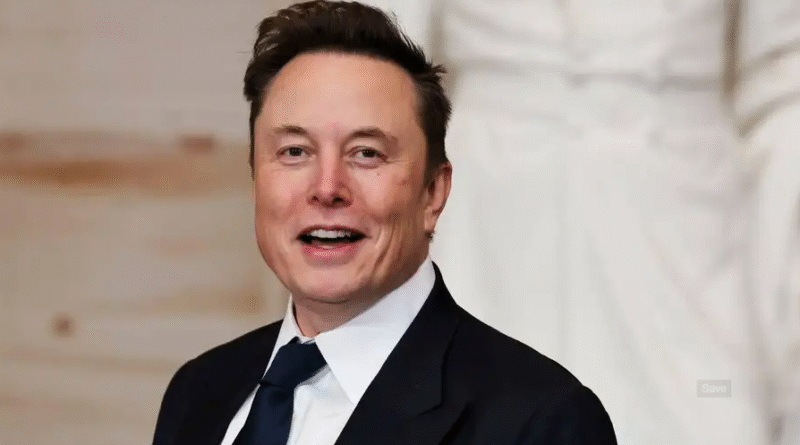Elon Musk Shifts Focus From DOGE to SpaceX’s Mars Mission, Aiming for a Self-Sustaining Colony by 2029
Elon Musk Mars Mission: the name synonymous with ambitious dreams and innovative ventures, has recently made a bold move that is causing ripples across the tech and space industries. After stepping away from his brief tenure at the Department of Government Efficiency (DOGE), Musk has refocused his energy on a cause that has been near and dear to him for years,SpaceX and its mission to colonize Mars.
In a passionate presentation at SpaceX’s Starbase in Texas, Musk laid out his vision for making humanity a multiplanetary species. The ultimate goal? A self-sustaining city on Mars by the end of this decade.

So, what’s the plan?
It starts with the massive goal of creating an interplanetary transport system. Musk envisions a fleet of 1,000 Starships launched every year to transport humans and supplies to the Red Planet. His plan isn’t just about making the journey to Mars; it’s about creating a new home for humanity, one that can support life independently of Earth. According to Musk, every launch is a step closer to refining the Starship technology and improving its ability to ferry millions of people to Mars.
“We measure our progress by how quickly we can establish a self-sustaining civilization on Mars,” Musk shared with the audience. “Each launch, especially in the early stages, is about learning what’s needed to make life multiplanetary.”
The Road to Making Life Multiplanetary: an update from @elonmusk on SpaceX's plan to reach Mars pic.twitter.com/d2cnsVKK80
— SpaceX (@SpaceX) May 29, 2025
This Mars-focused shift in Musk’s efforts follows his exit from DOGE, a project that aimed to reduce government waste,a mission he’s likely to leave to others while he turns his gaze toward the stars.
But what does it take to create a self-sustaining colony on Mars? Musk has some answers. First, it’s all about the logistics: 1 million tons of cargo will be necessary to establish the infrastructure for a permanent human presence on Mars. And that’s where SpaceX’s Starship comes in, with its massive payload capacity and plans for orbital refueling,a key factor in ensuring long-range missions are feasible.
In terms of building a city, SpaceX is planning to use Tesla Optimus robots to help lay the groundwork for Martian infrastructure. Musk’s team will also use Starlink satellites to ensure seamless communication with Earth. The first crewed missions are expected to begin in 2027, with the Arcadia Planitia region on Mars being the targeted landing site for the initial settlement. Musk’s vision isn’t just about making it to Mars, but about ensuring that it thrives, with the ability to survive independently.
Musk also believes that the Mars project offers a unique form of “insurance” for humanity. A dual-planet species would not only serve as a backup for our survival but would also enable mutual rescue between Earth and Mars in the case of a catastrophe. The far-reaching implications of this could be the ultimate safeguard for civilization.
Starship will hopefully depart for Mars at the end of next year with Optimus explorer robots! https://t.co/8dzlxzFg0h
— Elon Musk (@elonmusk) April 10, 2025
Once Mars is successfully colonized, Musk foresees humanity venturing even further into the cosmos, potentially exploring other planets and even other star systems. Musk’s idea of orbital refueling is part of this grand vision, allowing spacecraft to be refueled in space,like aerial refueling for planes, but far more complex.
But even with all the technical challenges ahead, Musk remains optimistic. “We can be out there among the stars, making science fiction no longer fiction,” he said, summarizing the audacity of his vision.
This move back to SpaceX’s Mars goals might come as a surprise to some who’ve followed Musk’s ventures into the world of cryptocurrency and government efficiency. But for Musk, it’s clear,reaching Mars isn’t just a dream. It’s a necessity for the future of humanity.
Raptor 3 (sea level variant)
— SpaceX (@SpaceX) August 3, 2024
Thrust: 280tf
Specific impulse: 350s
Engine mass: 1525kg
Engine + vehicle-side commodities and hardware mass : 1720kg pic.twitter.com/zormSroZyh
As Musk himself puts it,
“The future of civilization depends on becoming a multiplanetary species. It’s our best chance at survival.”
And with his track record, it’s hard not to believe that his dream of seeing a thriving, self-sustaining city on Mars might just become a reality sooner than we think.

